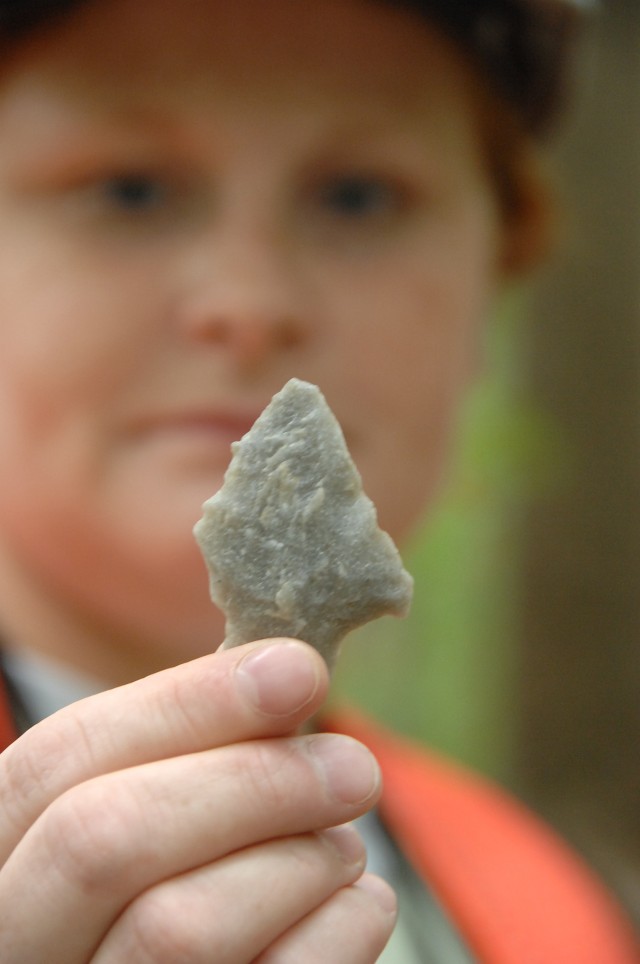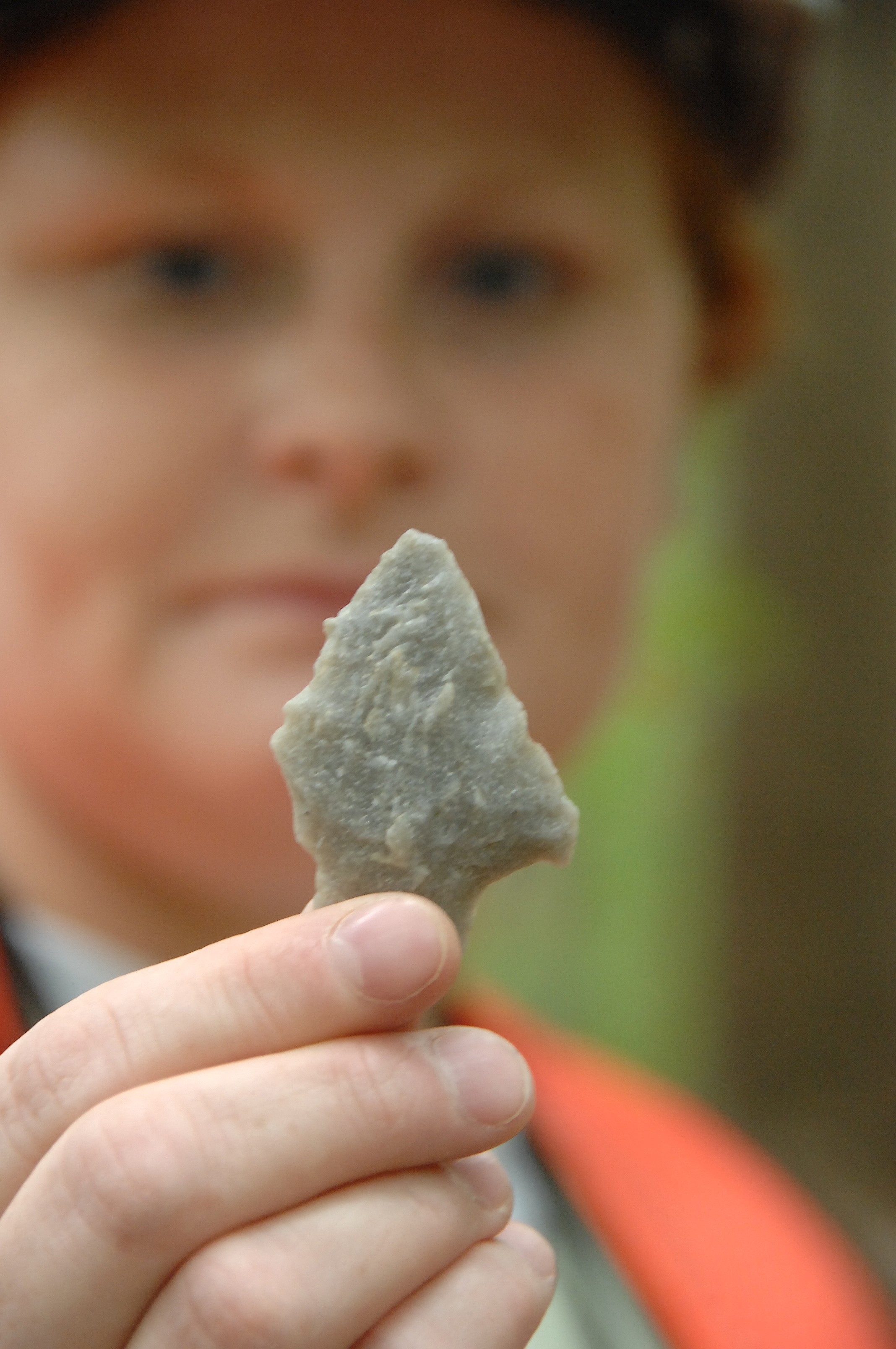FORT LEE, Va., -- Hunters and gatherers roamed the grounds of what we now call Fort Lee, Va., about 8,000 years ago. They built base camps, burned pottery and made stone tools. Even today, those artifacts are being unearthed and sometimes discovered just lying on open ground.
Preserving more than 100 archaeological sites on Fort Lee is the task of the Cultural Resources Program, Environmental Management Office on post. About 25 sites are eligible to be listed on the National Register of Historic Places.
Keeping the sites intact is important for the EMO because they have the potential to yield information about the Tidewater region of Virginia from the archaic period, said Amy Wood, archaeologist and collections manager.
The Tidewater region renders a distinct kind of archaeology zone, said Lyle Browning, Browning and Associates LTD president, a cultural resources management firm in Midlothian.
"The (archaeological sites) are richer, denser and more populated. You've got snakes, turtles and plant varieties available in abundance. They are good resources, and that's why they are long-occupied sites," Browning said.
In addition to Fort Lee, the region comprises about 13 other archaeological areas east of Interstate 95, which roughly stretches from Maryland to South Carolina.
Very little information has been collected from the middle to late archaic period within the Tidewater region. Fort Lee is an exception to that, Wood said.
Meeting the criteria for eligibility in the National Register is no easy task.
Agencies have to know their local and state archaeology and make an argument that their site(s) fits within that archaeology, Browning said.
"Many sites do not have the potential to tell that information," Browning said.
Or the agencies fail to argue how their sites fill an information gap in the archaeology, he added.
Although no full excavations have been conducted on Fort Lee's archaeological sites, the few artifacts that have been collected from surveys and minor field work have rendered some sites off-limits to construction because of their potential, Wood said.
"We don't really want to excavate a site if we find one," Wood said. "Our object is to identify and preserve the site."
That's because archaeology is destruction, said Browning.
"Our (excavation) techniques are good, but the ones 50 years from now will be better," Browning said. "That's why we prefer to leave them alone unless there is a threat to the site."
Listing a site in the National Register recognizes a property is significant to the nation, state or community.
It will have consideration in the planning for federally-assisted projects or qualify for federal assistance for historic preservation when funds are available. For details on the National Register, visit www.nps.gov/nr/.
(Jorge Gomez writes for the Fort Lee Traveller.)




Social Sharing